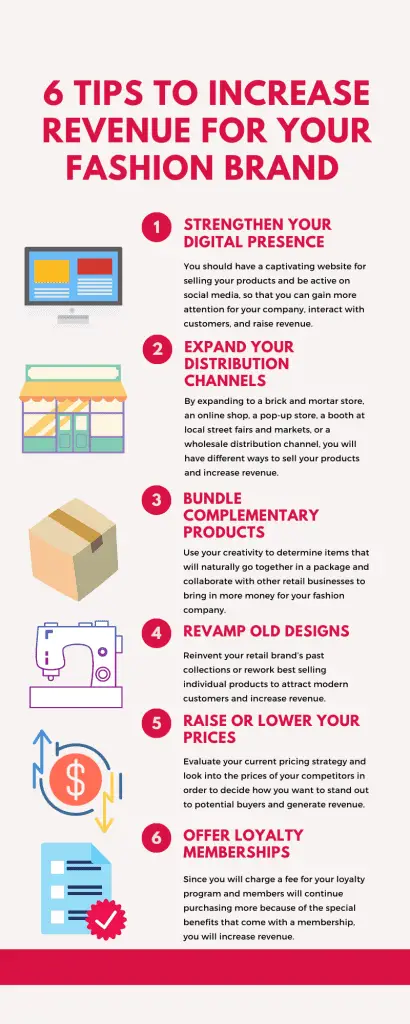Introduction
As an entrepreneur in the retail industry, you most likely have thought about the processes involved in creating your products and ultimately getting them to your customer. The phrase supply chain management has probably come up a lot in your research and conversations.
What is supply chain management? Supply chain management refers to the overall handling of goods and services from raw materials to the final product reaching the hands of the customer. The five areas that make up supply chain management operations are planning, sourcing, manufacturing, delivery and logistics, and returning.
When dealing with retail supply chains, you will face all types of challenges. Problems can quickly develop, so it is important to be on top of your supply chain systems. You want to be prepared for any issues that arise and know how to handle them beforehand.
Effective supply chain management is pivotal for the success of your fashion business. Some benefits include improved quality control, better flow of information, reduced costs, and higher efficiency. When done well, supply chain management can also add strategic value to your retail company and act as a competitive differentiator.
Now let’s take a look at the top 6 problems in retail supply chains and easy fixes for them:
- Meeting Customer Expectations
- Inefficient Operations
- Declining Profit Margins
- Omnichannel Integration
- Driver Shortage
- Managing Relationships
- Conclusions
1. Meeting Customer Expectations
The world of fashion is constantly evolving with new trends and expectations. There is an increased focus on the end consumer now. Retail companies especially need to spend more time taking consumer perceptions, preferences, and spending into account.
Customer expectations are rising in the contemporary marketplace, which has become a challenge for many fashion businesses. When customers are shopping online, they expect timely delivery of their products. They want the highest quality products for the cheapest prices as well. An easy fix to this problem is to consider what customers care about the most and create a plan to meet their priorities.
With regard to shipping and delivery services, the main priorities of customers are speed, consistency, and flexibility. Now that companies such as Amazon are offering same-day delivery and one-day shipping, it is not surprising that people are increasingly losing their patience and want their products as soon as possible. As a result, you can find software systems that will speed up your processes or move your distribution centers closer to customers. Keeping customers in the loop about the status of their orders will make them content with longer wait times and reduce their anxiety.
In addition, customers seek consistency. For instance, they like to know that any order they place will arrive in 2 days all the time. You can address this expectation challenge by using strategic sourcing, communicating clearly with your supplier and customers, and leveraging predictive analytics to make sensible decisions regarding possible disruptions. Customers want the quality of their products to be consistent too. By performing frequent inspections of the facilities you use, you will meet this demand.
Some customers might need special accommodations for their order, therefore having flexible shipping and pickup options is important. For example, if your retail company has rush delivery, an individual can pay extra so that their product arrives earlier than originally expected. This will keep your fashion business competitive and satisfy your current customers, while potentially bringing in new ones.
2. Inefficient Operations
A major problem for retail companies can be inefficient supply chain operations. If this sounds like an issue your fashion business is facing, don’t worry because there are quick fixes. You can increase visibility across your departments. Then everyone will have access to the same information and be aware of any unexpected changes.
The way your retail company is managing inventory can be easily improved as well. You will want to overcome challenges such as stock outs. You can avoid an out of stock issue by shortening your lead times. The less time it takes between the placement of your order and its delivery date, the easier it will be to meet demand. Determining reorder points is also helpful, since you should immediately purchase more stock once your inventory for a specific product reaches a point that you do not wish to go below. Another method to solving this problem is forecasting demand accurately and considering trends and data from previous years.
Upgrading to more modern systems is a solution for inefficient supply chain processes. Many businesses are still utilizing spreadsheets for their supply chain management. However, new technology is a lot easier to use and can analyze data effectively, while handling more complicated operations. Manual processes are more time-consuming too.
3. Declining Profit Margins
It is becoming increasingly difficult for your fashion business to be profitable. Customers desire excellent products for the lowest prices. Now that online shopping is so prevalent, it is easy to compare the prices of clothing items across different retailers. Therefore, you need to stand out and by offering better deals, your brand will be more competitive and catch the attention of potential customers.
You can work on minimizing material costs in order to offer cheaper prices for your customers. For instance, you can remove any unnecessary embellishments on your product such as extra zippers or buttons. This will help you lower costs and not have a significant impact on the overall quality of your product. As a result, your customer will be pleased and continue to shop at your fashion store, increasing your revenue.
Also, reducing waste during production is an easy fix for declining profit margins. Your retail company can collect clothing scraps or use leftover fabric rolls from garment factories. Technology can be utilized to alert you if there are unused materials and allow you to determine the best way to allocate them. Focusing on these methods to minimize waste will cut costs and increase your profit margins.
4. Omnichannel Integration
Brick and mortar stores are not the only way to sell products these days. People have various options to choose from including online retail, which they can access from a desktop, tablet, or phone. Omnichannel integration is a top problem in retail supply chains because companies have trouble maintaining consistency across all channels. It can become complex to manage.
A simple fix to this issue is to streamline your operations. New technology can help your fashion business follow your customers and determine how to best fulfill their needs. You should have a distinct purpose for each channel and optimize your resources. Integrating your data across touchpoints, then analyzing it can greatly improve your processes. Even if you believe you created a seamless service, you need to be constantly testing your strategy and adjusting it. Omnichannel shoppers tend to spend more money than single-channel shoppers, so you will want your channels running smoothly.
The customer experience you are providing should be the same no matter which channel a customer decides to use. For example, your website has to be user-friendly and easy to navigate just like if a customer is walking around in your store, searching for the section that has dresses and has no difficulty finding it. In addition, the products you are selling should be consistent across all channels. If a customer sees a top online and wants to try it on in your store, it should be available in that location for your customer to put on. Omnichannel integration is challenging, but if done effectively it can increase sales and traffic as well as foster customer loyalty.

5. Driver Shortage
The driver shortage is a huge problem affecting retail supply chains. Drivers are crucial for the fashion industry, since there is immense pressure for products to be transported in the shortest times possible. The average age of the talent pool is increasing as existing drivers are getting older. Plus, there are not many young people who are interested in working in this field. This staffing issue may seem daunting, but there are simple ways to solve it.
Developing new approaches to attract younger talent is an easy fix. For example, advertising through social media can raise awareness about the driver career path, highlight the benefits, and connect potential drivers with job opportunities. Many young adults spend hours scrolling through social media platforms such as Instagram or Facebook and also use ones like LinkedIn to search for jobs or network with business professionals. You will want to catch their attention, so creating posts or videos for them to interact with is beneficial. In addition, having an online application can encourage a younger audience to apply, since it is easy and quick to fill out.
Furthermore, younger generations value a steady work-life balance. If your fashion business offers drivers a flexible schedule and accommodates their preferences, individuals will be more excited to hear about your opportunities. Implementing wellness initiatives is important because a lot of people think driving is an unhealthy career. You should organize professional development, mentoring, and employee recognition programs because they will be appealing to possible candidates and retain your current workers.
6. Managing Relationships
Relationships matter in retail supply chains and if you fail to manage them properly, they can become issues for your fashion company. For example, if there is confusion between you and your vendors, certain products may not be up to standard or they might be shipped later than expected. Also, there can be tension if your vendor believes your payments are not timely or that you give short notice about orders.
A simple fix for these common problems is to communicate clearly with your suppliers. Establish expectations for communicating early on and know the information you need from each other. You should both take advantage of new technology to provide quick updates or share any pressing concerns. If you remember to always be respectful of their time, it will be easy to avoid conflict.
When working with international vendors, you need to be aware that changes in policies can occur and impact your current contracts. You will want to sustain strong relationships with your global suppliers because if you have done business with them for a long time, there will be trust. As a result, they will be more willing to collaborate on a new deal that benefits everyone.
7. Conclusions
Your supply chain management will significantly impact the success of your retail company. In this article, we covered the top 6 supply chain issues that your fashion business will face and easy ways to overcome them. The first problem is meeting customer expectations. With the needs of modern-day buyers changing rapidly, your brand must look into your customers’ priorities and focus on providing fast, consistent, and flexible options to meet their demands. Second, inefficient operations are an issue in retail supply chains. But, increasing visibility, improving inventory management, and upgrading to newer systems are all effective solutions. The third problem is declining profit margins. However, you can fix this by offering better deals to acquire and retain more customers, minimizing material costs, and reducing production waste.
Fourth, omnichannel integration is a problem for retail companies, but you can solve it by streamlining your supply chain processes and ensuring the customer experience is consistent across all channels. The fifth challenge in your fashion supply chains is the driver shortage. Although it might appear difficult to attract younger generations and retain existing workers, you can easily overcome this by using social media marketing, online applications, and offering favorable programs. Sixth, managing relationships in retail supply chains is the last issue we discussed. Clear communication is a simple fix and will build trust between you and your vendors.







